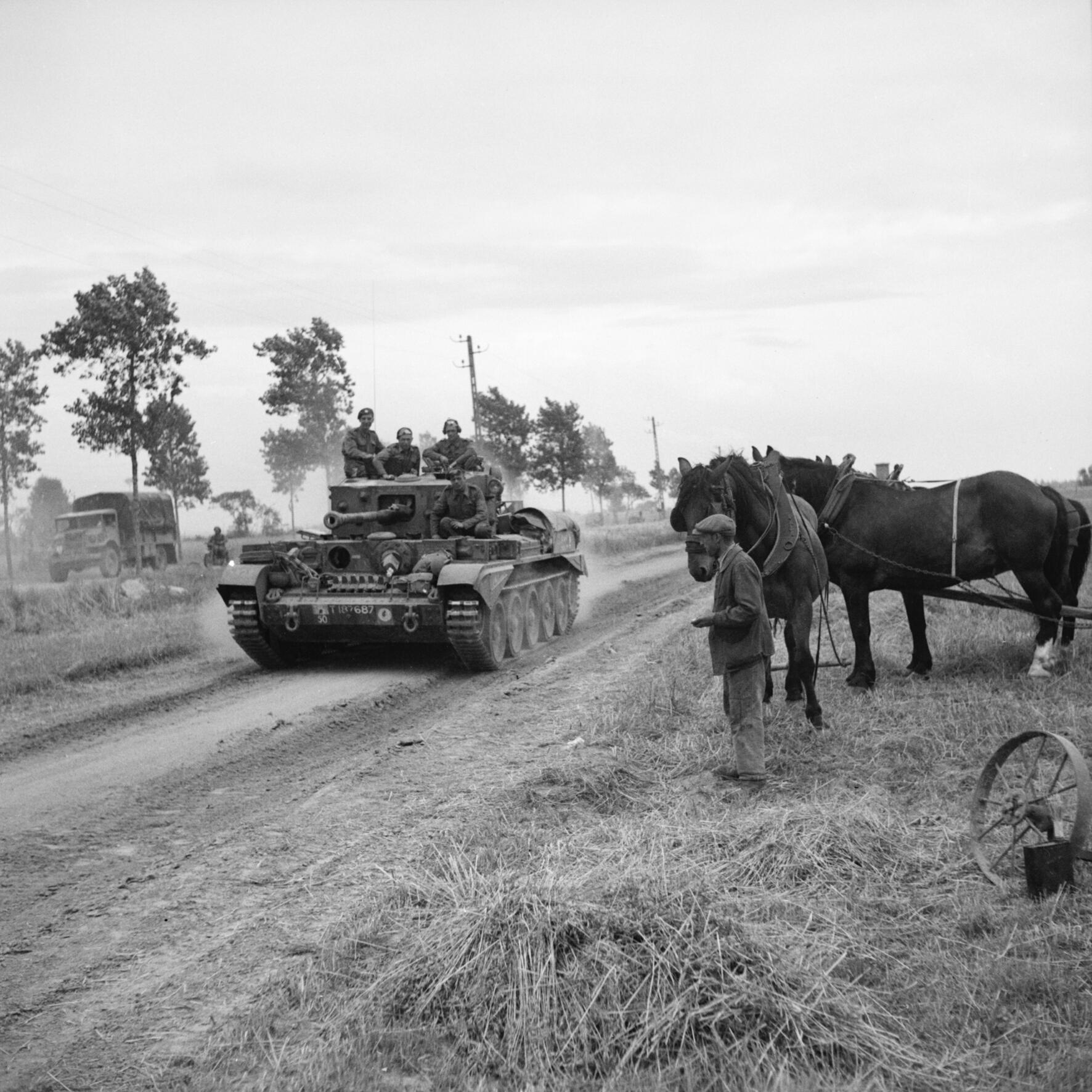
The 7th Armored Division was a British mechanized troop that distinguished itself in several campaigns during the Second World War. In particular, being deployed from the outset of the war on the Libyan-Egyptian front, it gained a formidable reputation for efficiency and fighting experience in the desert war, participating in all major battles in that theater of the war during the period from 1940 to1943. Dubbed the “Desert Rats,” its departments were respected and feared by the skilled German forces of Afrikakorps.
As part of the British Army in Egypt, the division was initially called the Mobile or Mobile Force (Egypt). It was one of the two armored formations created in Britain before the war to study new battleship tactics. During that period, the command of the division was under Major General Percy Hobart, who clearly wanted to be an expert in armored tactics.
With the outbreak of the war in September 1939, the division’s name was transformed from the Armored Division (Egypt) to the 7th Armored Division on 16 February 1940.
The elements of the future 7th Armored Division arrived in the Middle East in 1938 to increase the number of British forces in Egypt.
The ‘Mobile Force’ was allocated 120 km west of Alexandria. It was formed by the Cairo Cavalry Brigade, which included three armored regiments, the 7th, 8th, and 11th Hussars, plus the 1st Royal Tank Regiment, 3rd Regiment Royal Horse Artillery, a company of the Royal Army Service Corps and a unit field ambulance. It was joined by a battalion of the King’s Royal Rifle Corps.
The first commander was Percy Hobart, famous for having created the Funnies’s invasion of Normandy; Hobart was an expert in armored warfare and saw that his troops were adequately prepared to fight in the desert, even if materials were scarce.
Beginning in Egypt, there were only two units; one was the 7th Armored and the other was the 4th Indian Division, which was replaced later by the 6th Infantry Division in Australia. The two divisions were the core of the future Western Desert Force (WDF), the Western Desert Force.
In December 1939, General Hobart was replaced by General Michael O’Moore Creagh. The division was to have 220 tanks at the beginning of the war, but they were only 65.
On 16 February 1940, the ‘Mobile Division’s name passed to the 7th Armored Division. The divisional symbol, a Desert Rat, had been adopted at about the same time as the time of name change. The emblem, Jerboa, was designed by the wife of the commander of the division after a visit to the Cairo Zoo.
After the declaration of war on the Italians on 10 June 1940, the Western Desert Force was apparently outnumbered. Still, the Italian soldiers did not prove to be very combative, the mechanical enemies were few and of modest quality, and Italian commands gave bad evidence, so the first year of the desert war ended with great British success: almost 150,000 prisoners were captured only up to February 1941.
During the retreat of the Italians in 1941, the commander of the WDF, Richard O’Connor, ordered the division to move south of the Jebel Akhdar and cut off the Italian forces at Beda Fomm while Australian forces urged the enemy to the west. Since the tanks could not go at great speeds, the maneuver was made by a department (the “Combe Force”) of armored, motorized artillery and infantry in 30 hours, cutting off the retreat of the Italians and completing the destruction of the Italian Tenth Army.
The Italian forces had proved to be so weak that Hitler decided to send reinforcements to their allies, the Afrika Korps, under the command of General Erwin Rommel.
The WDF was transformed into the XIII Corps, one of the parties to the Eighth Army. The 7th Armored Division took part in all the battles in North Africa, including the two battles of El Alamein (the First and the Second), plus the Battle of Alam Halfa. Also took part in operations in Tunisia in 1943.
The division was not a part of the force for the liberation of Sicily but was used very intensively in the battle for the liberation of Italy. The Desert Rats, who were accustomed to fighting in the desert, found themselves in difficulty in the Italian roads. Thanks to the division, which made use of bridges, helped many Allied units to cross the river Volturno.